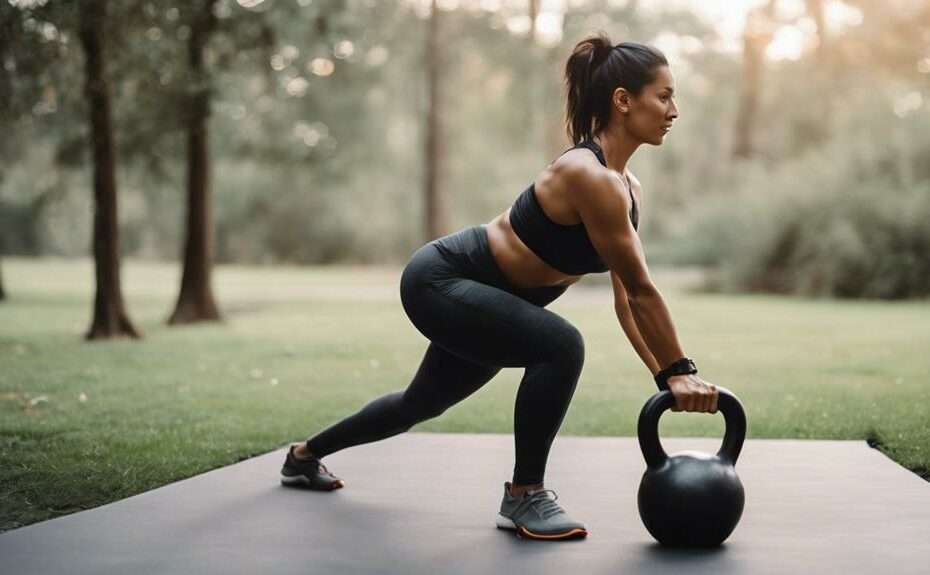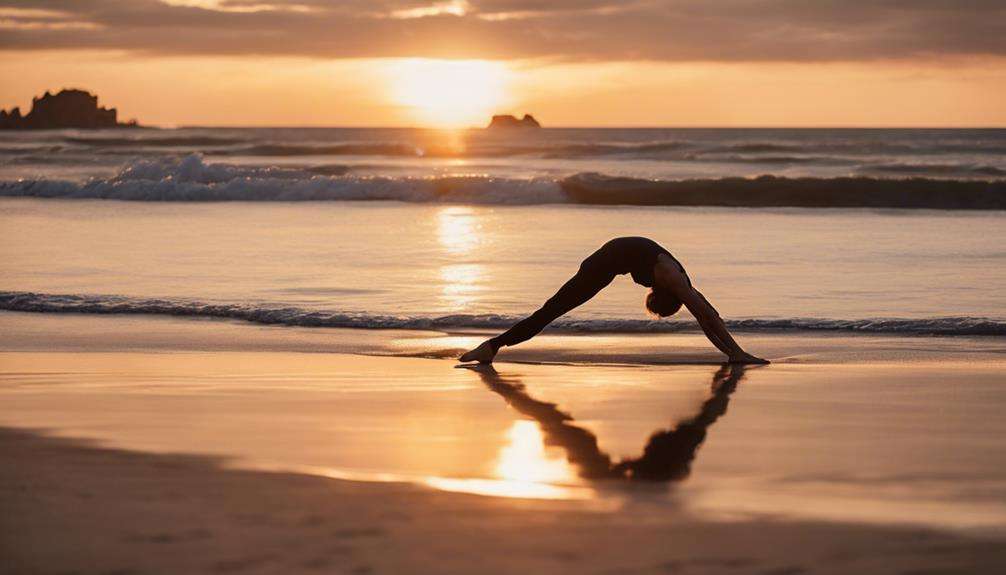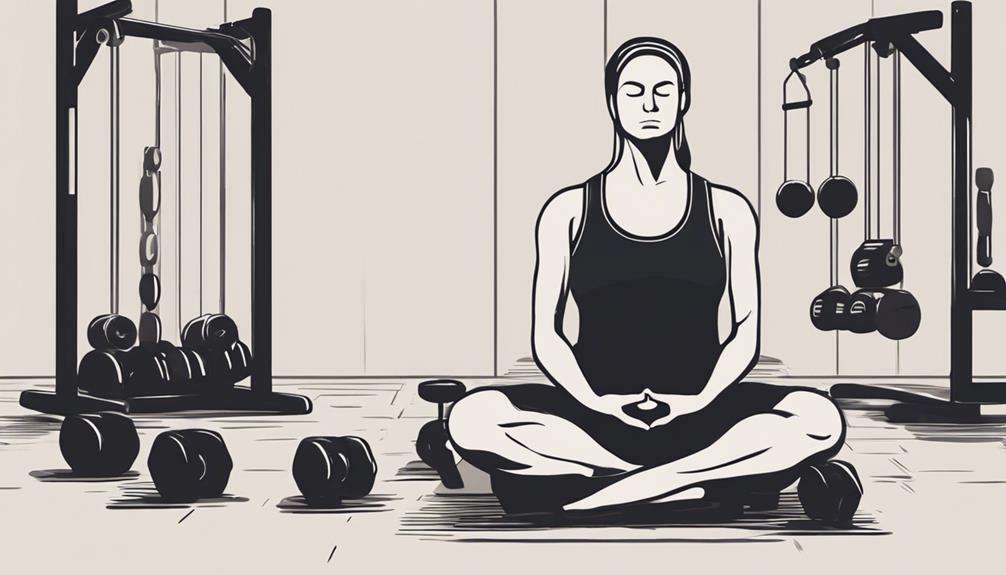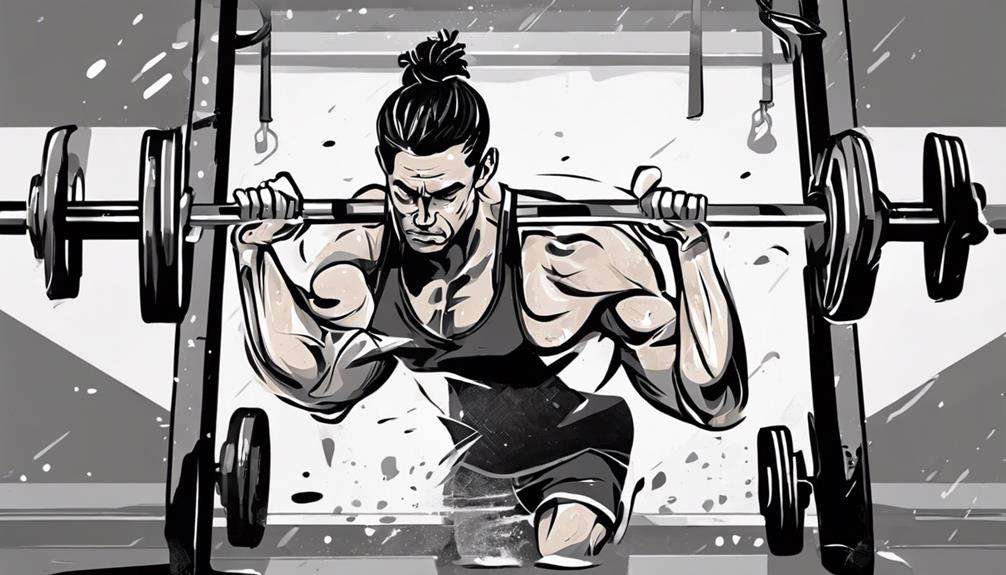Imagine your body is a finely tuned instrument that requires regular maintenance to perform at its peak. Just as a musician practices diligently to perfect their craft, your physical well-being demands attention and care to optimize strength and balance.
By exploring the ten best practices tailored to enhance your body's capabilities, you can access a world of possibilities that will empower you to move with grace and resilience.
So, are you ready to discover the key to accessing your body's full potential?
Key Takeaways
- Core strengthening poses and balance asanas improve muscle strength and stability.
- Incorporating breath awareness enhances balance, concentration, and body coordination.
- Mind-body connection practices like yoga and tai chi promote mental clarity and reduce stress.
- Restorative poses aid in recovery, promoting relaxation and reducing tension for overall well-being.
Importance of Strength Training in Yoga
Strength training in yoga is essential for enhancing muscle strength, endurance, and stability to support overall body function. By incorporating balance exercises into your yoga practice, you can specifically target muscle groups that contribute to improved posture and stability. Yoga poses like Tree Pose, Eagle Pose, and Dancer's Pose require engagement of various muscle groups to maintain balance, which in turn helps to strengthen those muscles. These poses not only challenge your balance but also enhance coordination, contributing to your overall strength development.
Improving posture through strength training in yoga is vital for maintaining proper alignment and reducing the risk of injuries. Poses like Warrior series help strengthen the muscles along the spine, shoulders, and core, leading to better posture over time. Regularly practicing these strength-based yoga sequences can result in increased muscle tone, better balance, and enhanced physical resilience, ultimately supporting your overall well-being.
Core Strengthening Poses
Core strengthening poses like Plank Variations and Boat Pose Variations are essential for targeting key muscle groups like the abdominals and back. These poses not only improve stability and posture but also help prevent injuries and relieve lower back pain.
Incorporating these poses into your routine can greatly enhance your core strength and overall body stability.
Plank Variations
Incorporate various plank variations to target different muscle groups effectively and enhance your overall fitness regimen. Plank exercises are versatile and offer a range of benefits for strengthening your core muscles and improving balance. Here are three key variations to add to your routine:
- Side Planks: Engage your obliques and improve lateral stability by supporting your body weight on one arm and the side of your foot.
- Forearm Planks: Target your deep core muscles by maintaining a straight line from head to heels while resting on your forearms.
- Plank with Leg Lifts: Enhance lower back and glute strength by lifting and holding one leg at a time while in a traditional plank position.
Integrating these variations will challenge your muscles and help you progress towards a stronger and more stable core.
Boat Pose Variations
Exploring various modifications of Boat Pose can enhance your abdominal muscle strength and overall core stability effectively.
Boat Pose variations, such as Half Boat Pose, Low Boat Pose, and Extended Boat Pose, target different muscle groups, challenging your core in unique ways.
By incorporating these variations into your routine, you can improve balance, strengthen your core, and enhance posture.
Engaging in Boat Pose variations not only targets the superficial abdominal muscles but also activates the deep core muscles, leading to better spinal alignment and increased body awareness.
Consistent practice of these poses can result in heightened core strength, better balance, and a more toned midsection.
Add Boat Pose variations to your workout regimen to boost core strength and improve overall stability.
Standing Balance Asanas

Standing balance asanas, such as Tree Pose in yoga, are effective for improving proprioception and strengthening lower body muscles. When you engage in standing balance poses, you challenge your stability and enhance your focus, ultimately promoting mental clarity. By practicing these asanas regularly, you can improve your balance, prevent falls, and increase your overall body awareness.
Here are three key benefits of incorporating standing balance asanas into your routine:
- Enhanced Stability: Standing on one foot in poses like Tree Pose or Warrior III helps improve your balance by engaging the muscles in your lower body.
- Core Strengthening: Asanas like Balancing Half Moon require core engagement for stability, leading to improved balance and coordination.
- Posture Improvement: Regular practice of standing balance poses can result in better posture and increased confidence in your physical movements.
Inversion Poses for Strength
Inversion poses are a powerful way to strengthen your upper body and core muscles. These poses, like Headstand and Shoulderstand, require focus and alignment to improve balance and stability.
Benefits of Inversions
Indulging in inversion poses, such as headstands and shoulder stands, can greatly enhance your core strength, balance, and stability. When you incorporate these poses into your routine, you can experience various benefits:
- Improved Balance: Inversions challenge your proprioception and spatial awareness, helping you stand on one foot with greater ease and control.
- Increased Strength: By engaging your core muscles and stabilizers, inversion poses work to strengthen your entire body, promoting better posture and alignment.
- Supports Overall Well-being: These poses not only aid in physical strength but also help in boosting mental clarity, reducing stress levels, and enhancing your emotional well-being.
Engage in inversion poses mindfully to reap these advantages and elevate your practice.
Best Inversion Poses
Enhance your strength and stability by incorporating key inversion poses that target core muscles effectively. Inversion poses, such as Headstand and Shoulderstand, are excellent for improving balance, strength, and overall core muscle engagement.
Headstand specifically works on strengthening the shoulders, arms, and upper back muscles, contributing to enhanced upper body strength. On the other hand, Shoulderstand not only targets core muscles but also stimulates the thyroid gland, which can benefit metabolism and energy levels.
Arm Balance Practices
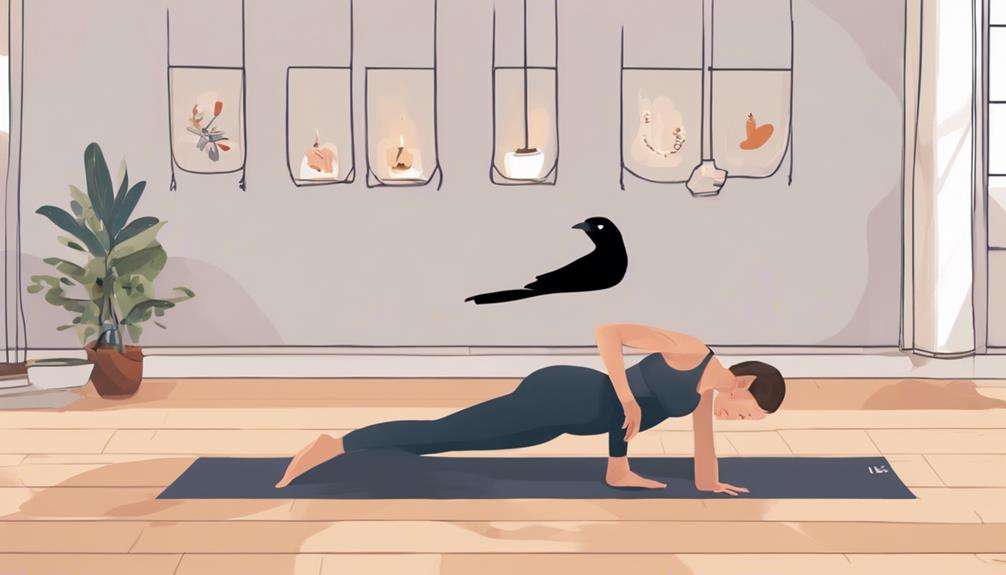
Arm balance practices are effective for enhancing upper body strength, core stability, and overall balance. Engaging in poses like Crow Pose, Side Plank, and Eight-Angle Pose challenges your coordination and concentration, leading to improvements in strength and balance. These poses specifically target the arm, shoulder, and core muscles, requiring you to engage them for strength and control.
By practicing arm balances regularly, you can enhance muscle endurance and flexibility in your arms and shoulders. Additionally, these practices can boost your confidence, focus, and mental clarity through challenging physical movements. Incorporating arm balances into your routine can provide a holistic approach to improving both physical and mental well-being.
Flexibility and Stability Exercises
Engage in stretching exercises to enhance your flexibility. This can boost your range of motion and muscle stretching capabilities.
Incorporate stability exercises like single-leg squats to strengthen core muscles and improve balance.
Balancing poses such as Tree Pose can help enhance stability and lower body strength for better overall coordination.
Stretching for Flexibility
Regular stretching is a key component in improving flexibility, range of motion, and joint mobility, leading to enhanced stability and reduced risk of injury. Stretching not only increases muscle elasticity but also enhances your overall athletic performance and functional movement.
To improve flexibility effectively, consider incorporating the following practices into your routine:
- Balance Training: Include exercises that challenge your balance, such as single-leg stands or yoga poses, to enhance stability and coordination.
- Specific Exercises: Focus on stretches that target areas of tightness or limited mobility to improve overall flexibility and joint function.
- Flexibility Benefits: Understand that flexible muscles are less prone to strains and injuries, leading to better muscle balance and posture.
Core Strength Exercises
Wondering how core strength exercises can enhance your flexibility and stability while boosting overall body strength?
Core exercises such as planks, Supermans, and spinal balance series specifically target muscles in the abdominal, oblique, back, and pelvic floor regions. By strengthening these core muscles, from shoulders to hips, you not only improve balance and posture but also increase overall body strength.
Consistent practice of core exercises not only enhances spine support but also plays a key role in injury prevention. A strong core is crucial for stability in both daily activities and exercise routines.
Incorporating core strength exercises into your fitness regimen can greatly improve your balance, stability, and overall physical well-being.
Balance Training Techniques
To enhance your flexibility and stability, incorporating a variety of balance training techniques such as flexibility and stability exercises can greatly improve your overall physical well-being. Here are three key exercises to help you improve your balance and strength:
- Flexibility Exercises: Engaging in yoga poses can enhance joint mobility, increase your range of motion, and boost athletic performance.
- Stability Exercises: Performing single-leg squats and lateral thigh lifts can strengthen your core muscles and outer thighs, leading to improved balance.
- Balance-Focused Workouts: Trying out poses like Tree Pose and Balancing Half Moon can help strengthen your lower body muscles, ultimately enhancing your balance and overall physical strength.
Incorporating these exercises into your routine can lead to significant improvements in your balance and stability.
Breath Awareness for Balance
Incorporating breath awareness into your balance routine can greatly enhance your stability and concentration during exercises. By focusing on your breath during balance exercises, you can center your mind and body, leading to improved concentration and stability. Deep and essential breathing is vital as it supports better posture and alignment while engaging in activities that require balance. Mindful breathing not only aids in calming the nervous system and reducing stress but also promotes overall balance.
When you integrate breath awareness into your balance practice, you can increase your body awareness and enhance coordination. This heightened awareness of your breath can help you stay present in the moment, allowing you to better connect with your body's movements and positioning. As you pay closer attention to your breath, you'll likely find yourself more grounded and better equipped to tackle various balance challenges effectively. Remember, your breath is a powerful tool in improving your balance skills.
Enhancing Muscle Endurance
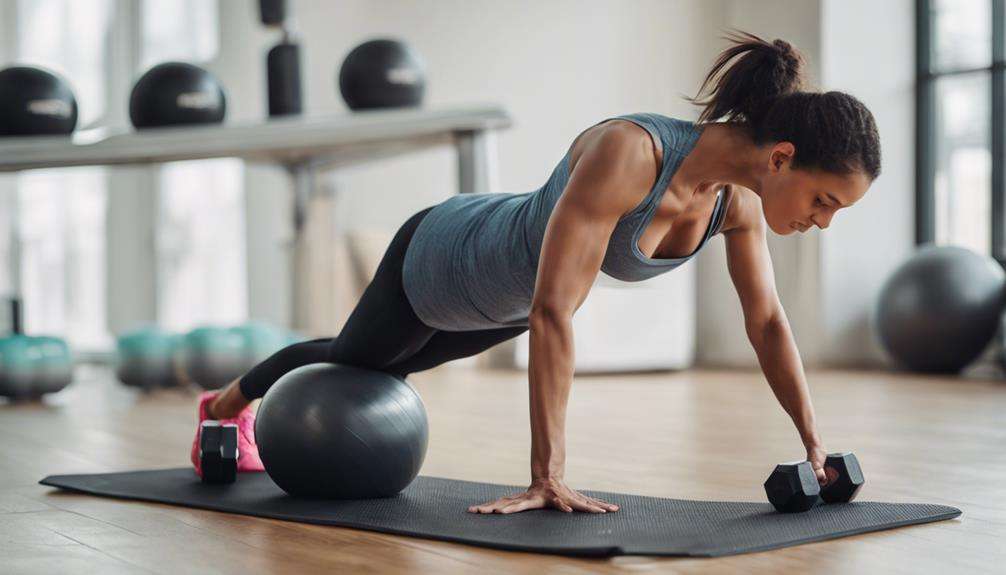
To enhance muscle endurance, focus on repeatedly exerting force over an extended period, which is important for improving athletic performance and overall fitness levels. When aiming to boost your muscle endurance, consider the following:
- Perform Leg Exercises: Engaging in leg-focused endurance exercises, such as lunges, squats, and calf raises, can help strengthen the lower body muscles and improve balance.
- Incorporate Standing Exercises: Incorporating standing exercises like single-leg stands or heel raises challenges the muscles in a weight-bearing position, enhancing endurance and stability.
- Utilize Circuit Training: Circuit training, which involves moving quickly from one exercise to another with minimal rest, is an effective way to enhance muscle endurance by keeping the muscles engaged throughout the workout.
Mind-Body Connection Practices
Engage in mind-body connection practices like yoga and tai chi to enhance balance and improve awareness of your body's positioning and movements. These mind-body exercises are especially beneficial for older adults as they focus on breathing techniques, mindfulness, and concentration, ultimately leading to improved stability and coordination. By integrating the mental and physical aspects, individuals can develop a deeper sense of balance and control in their movements.
Tai chi, in particular, is known for its slow and gentle movements that promote balance and mindfulness. Practicing tai chi regularly can help improve proprioception, which is the body's ability to sense its position in space. This enhanced awareness of body positioning plays an important role in preventing falls and maintaining stability, especially in older adults.
Mind-body connection practices not only enhance physical balance but also contribute to reducing stress, anxiety, and tension. By tuning into your body's signals through these exercises, you can gain a better understanding of your physical capabilities and limitations, leading to an overall improved sense of well-being.
Restorative Poses for Recovery
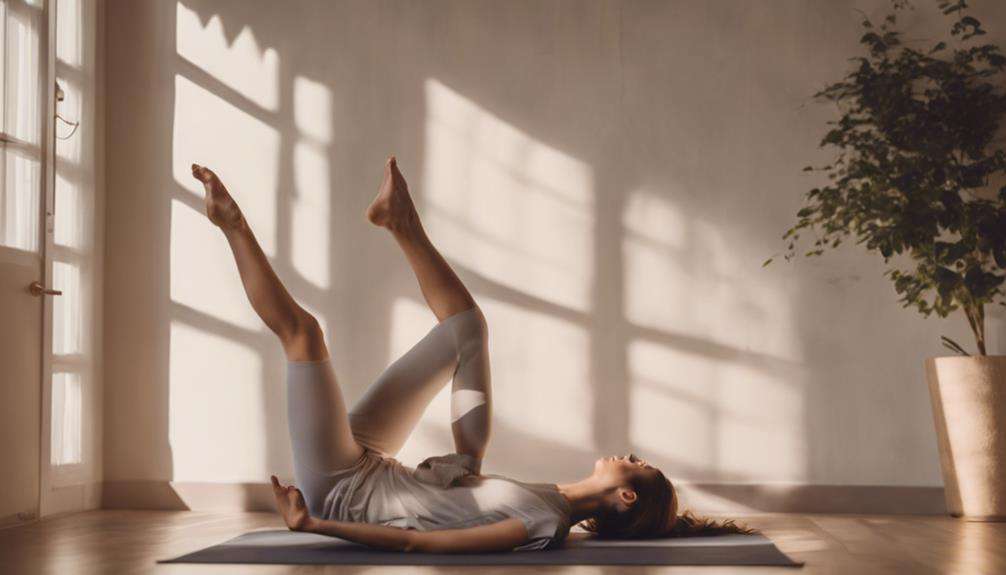
Utilize restorative poses as a key component for enhancing recovery after physical activity by promoting relaxation, reducing stress, and aiding in muscle repair. These poses are a valuable tool in your recovery routine, offering numerous benefits to help your body recuperate effectively. Here are three ways restorative poses can aid in your recovery:
- Enhanced Circulation: Restorative poses help improve blood flow throughout your body, delivering essential nutrients to your muscles and aiding in the repair process.
- Improved Flexibility: By incorporating restorative poses into your routine, you can increase your flexibility, reduce the risk of injury, and enhance overall mobility.
- Support for Natural Healing: These poses support your body's natural healing processes, allowing for better recovery from strenuous physical activities.
Incorporating restorative poses into your recovery regimen can make a significant difference in how your body feels post-workout. So, next time you need to recover, consider including these poses to optimize your recovery process.
Frequently Asked Questions
How Can I Improve My Strength and Balance?
To improve strength and balance, focus on incorporating strength training, yoga poses, nutrition tips, and stability exercises into your routine. Consistent practice and guidance from professionals will help you progress effectively and achieve your goals.
What Are 3 Ways to Improve Balance?
To improve balance, try yoga poses for stability, Pilates exercises for strength, and Tai Chi for fluidity. Incorporate balance boards, stability balls, and ballet techniques. Work on core strength and practice proprioception drills for enhanced stability.
What Is the Most Effective Training Method for Balance?
For improving balance, Tai Chi practice stands out as highly effective. It combines slow movements with breathing for stability and mindfulness. Suitable for all ages and fitness levels, Tai Chi's gentle nature makes it accessible for boosting balance.
How Long Does It Take to Improve Strength and Balance?
Improving strength and balance takes time and dedication. Progress varies, influenced by factors like fitness level and consistency. Results show gradually, so stay patient. With consistent training, you'll notice improvements in 4-12 weeks.
Conclusion
By consistently incorporating a variety of strength and balance exercises into your routine, you can effectively enhance your overall physical well-being. Remember, staying dedicated to these practices will lead to significant improvements in strength and stability.
It's important to prioritize your health and make these exercises a regular part of your daily life to achieve best results. Keep up the great work and continue on your path to a healthier, stronger you.
